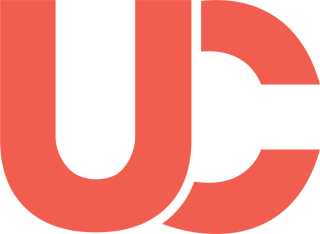Elevating Efficiency and Cost-Effectiveness in Unemployment Cost Management

In today’s fast-moving business landscape, effective management of unemployment costs is crucial for improving efficiency and cutting unnecessary expenses. Every dollar saved contributes to the bottom line, making it essential for companies to implement smart strategies for time and cost savings in this area. Here are some actionable tips to help your business efficiently manage unemployment costs.
Leading Strategic Workforce Planning
Crafting a strategic workforce plan is essential for aligning your human resources with your long-term business goals, significantly reducing the risk of layoffs and minimizing unemployment claims. This proactive planning process involves a thorough analysis of current workforce capabilities, identifying future staffing needs based on your company’s strategic objectives, and developing a roadmap to bridge any gaps. During this process, consider how industry trends and technological advancements may affect these requirements. Workforce planning is an ongoing process. Regularly review your workforce plan and adjust as necessary. This agility allows you to respond to changes in the business environment or strategic direction promptly. Ensure that all relevant stakeholders, including department heads and HR, are involved in this process. Their insights can provide valuable perspectives on the needs and capabilities within the organization.
Prioritizing Clear Communication
Effective communication stands at the core of efficient unemployment cost management. By establishing clear, transparent dialogue with employees, businesses can prevent misunderstandings that often lead to unwarranted claims. It’s crucial to delineate expectations, performance standards, and disciplinary actions clearly within employment agreements to avoid disputes. Open lines of communication also facilitate quick resolution of issues, diminishing the likelihood of involuntary terminations.
Ensuring Rigorous Documentation and Record-Keeping
Maintaining detailed documentation serves as a fundamental protective measure against baseless claims, necessitating the thorough record-keeping of employee performance, behavior, and any notable occurrences. This documentation is crucial not only for unemployment hearings but also for internal reviews and performance management processes. Well-organized records can assist in identifying patterns of behavior or performance issues early on, allowing for proactive management and potentially avoiding disputes before they escalate. This practice not only supports a company’s case in legal matters but also contributes to a transparent and fair work environment, reinforcing trust and accountability within the organization.
Investing in Employee Training and Development
Allocating resources to employee training and development yields many advantages, beyond mere skill improvement to foster higher levels of job satisfaction and engagement among staff. By cultivating a culture of continuous learning and professional growth, employees feel valued and motivated, which in turn enhances their performance and productivity. This strategic investment not only minimizes the likelihood of performance-related issues but also significantly lowers the risk of facing unemployment claims. Furthermore, a commitment to training and development helps in attracting and retaining top talent, as ambitious professionals often seek environments that support their career advancement. Equipping employees with the latest skills and knowledge also ensures that your organization remains competitive and adaptable to industry changes, ultimately contributing to its long-term success and stability.
Leveraging Technology for Efficiency
Adopting technology solutions plays a pivotal role in enhancing the management of unemployment costs through heightened efficiency and accuracy. The deployment of integrated HR and payroll systems not only automates the process of maintaining records but also enables real-time monitoring of performance metrics, aiding in informed and strategic decision-making. This technological integration significantly alleviates the administrative load on HR departments, allowing them to devote more resources to strategic initiatives that propel business growth. Moreover, advanced analytics provided by these systems can offer deep insights into workforce trends, helping to predict and mitigate potential unemployment claims before they arise. In essence, leveraging technology in HR practices not only streamlines operations but also supports a proactive approach to managing unemployment costs, contributing to the overall health and success of the organization.
Staying Up to Date with Employment Legislation
Maintaining a current knowledge of employment legislation is crucial for navigating the complex landscape of labor laws and avoiding potential legal challenges. By actively monitoring and adapting to legislative updates, organizations can ensure they remain compliant with current regulations, thereby managing unemployment claims more effectively. It’s not only about adhering to the law but also about leveraging this knowledge to refine company policies and procedures in line with the latest legal standards. This proactive approach not only safeguards the company against potential fines and penalties but also enhances its reputation as a fair and law-abiding employer. Furthermore, educating your workforce about their rights and responsibilities under these laws fosters a transparent and respectful working environment, contributing to overall organizational integrity and stability.
Considering Strategic Outsourcing
Outsourcing the administration of unemployment claims to experts can enhance efficiency, expertise, and cost-effectiveness. By entrusting this function to specialists, internal teams are freed to focus on core business activities, driving forward growth and innovation.
Navigating unemployment cost management successfully requires a strategic blend of workforce planning, clear communication, diligent documentation, employee development, technological integration, legal awareness, and consideration of strategic outsourcing. By embracing these practices, organizations can not only navigate the challenges of unemployment claims with confidence but also achieve substantial time and cost savings. Prioritizing these areas ensures effective and sustainable management of unemployment costs, contributing to the long-term success and stability of your business.
Get a free unemployment claims projection and learn how we save employers up to 40% or more on their unemployment costs.





